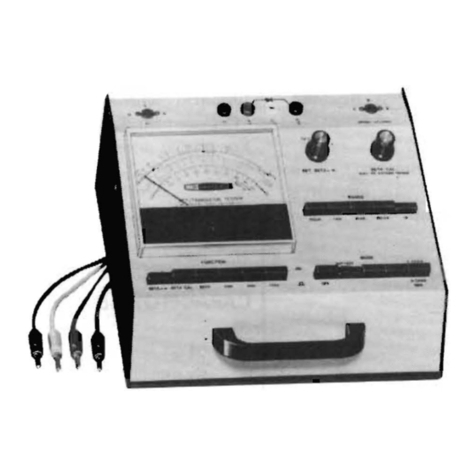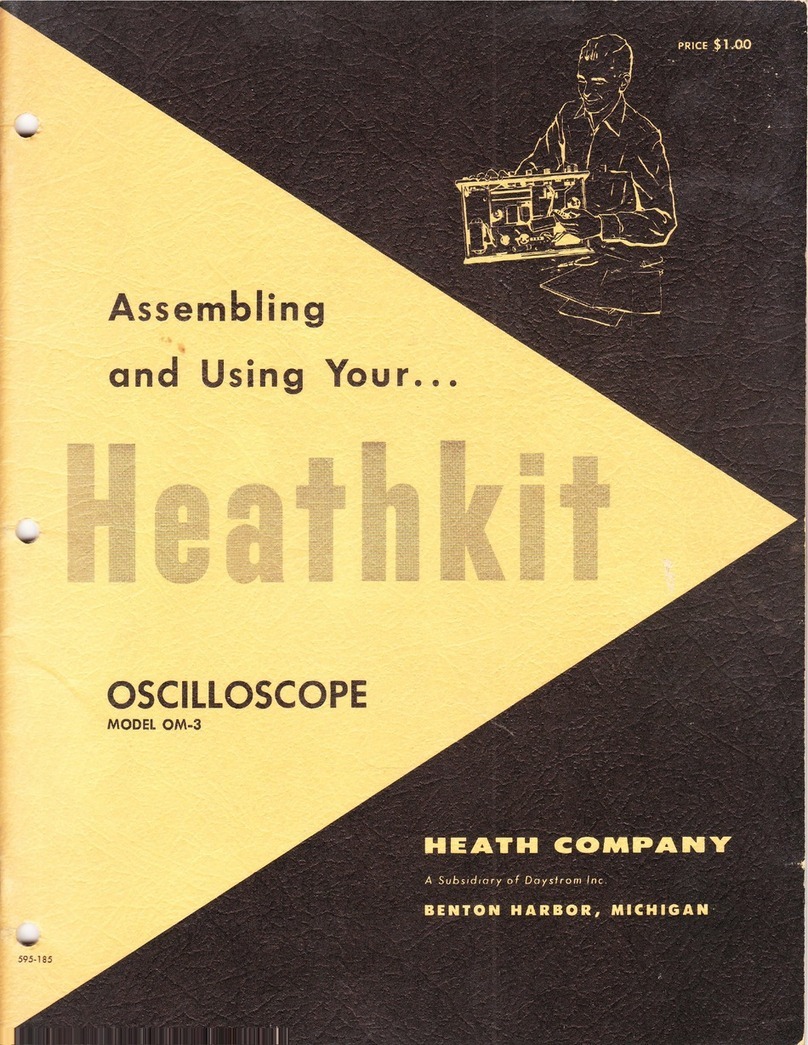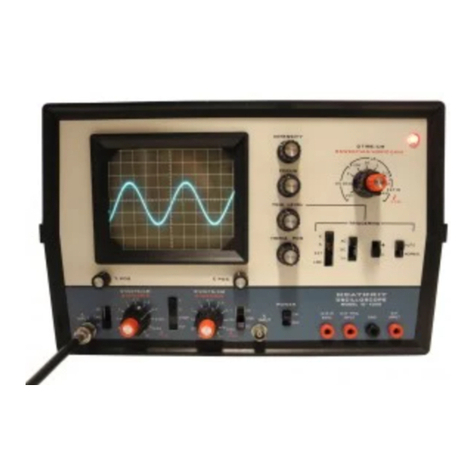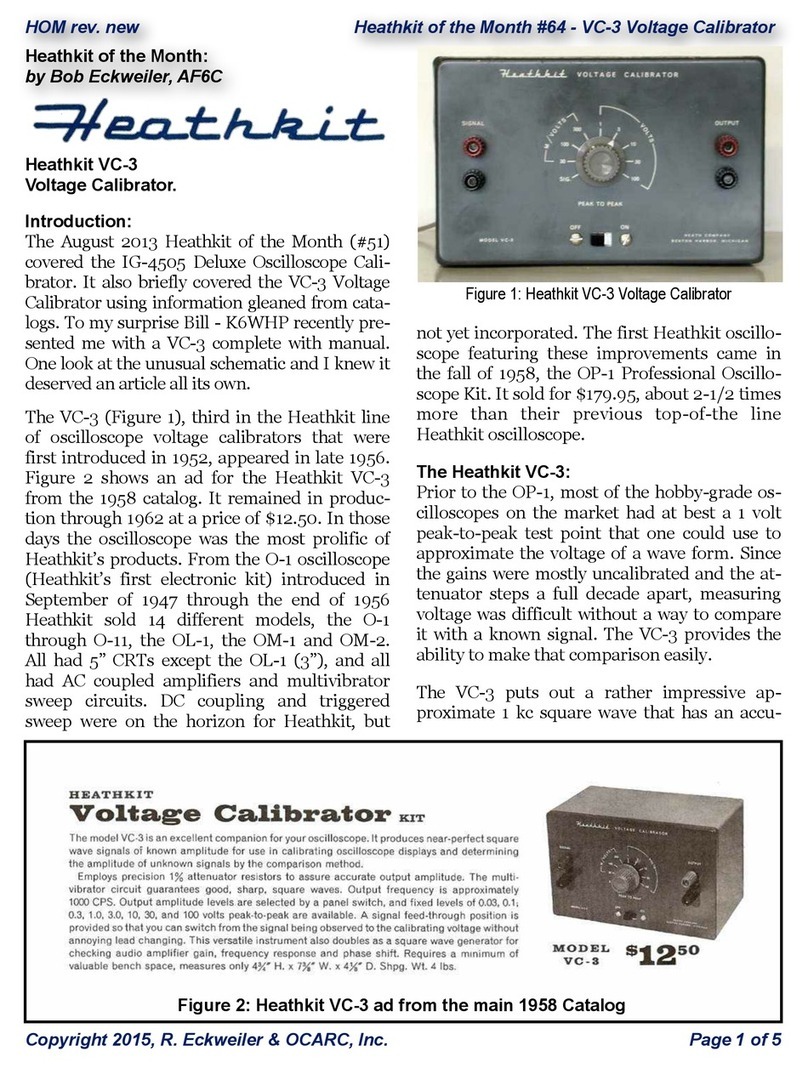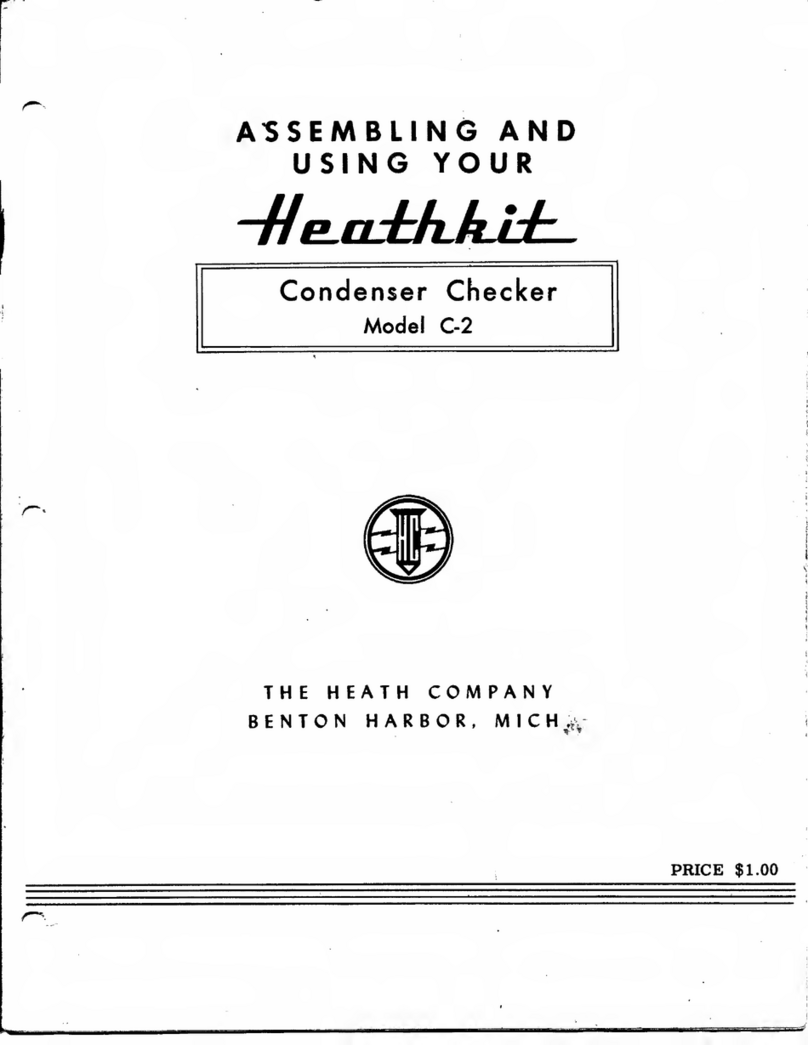INTRODUCTION
The Heathkit Model IG-18 Sine-Square Audio Generator has
been designed for laboratory use
as
well
as
for service and
testing. Sine wave signals are available between 1
Hz
and 100
kHz. Low distortion (less
than
.1%) sine wave signals are
available from
10
Hz
to
100 kHz. The
output
is
stepped from
.003 volt
to
10
volts. These
high
quality sine
wave
signals
make
it
ideal for such applications
as
testing audio amplifiers
for gain
and
frequency response,
as
a signal source for
harmonic distortion measurements, or
as
ap external
modulator for an
RF
signal generator.
Square wave signals with a rise time of 50 nanoseconds are
available from 5
Hz
to
100 kHz
at
output
levels up
to
10
volts. These clean square wave signals can be used for
checking frequency response in audio equipment, or as a
trigger for testing digital instruments.
HElATHKIT®
The sine
and
square wave frequencies are identical and
thc
level
of
each is independently adjustable. Both signals may be
used either simultaneously or independently.
The sine wave
output
will operate into high impedance loads
(10
kn
or higher) in all
output
ranges, or
it
will opcrate into
600 ohm loads in ranges up
to
1 volt. The square wave
output
is
designed
to
operate into loads of 2000 ohms or
greater.
Other features include: A panel meter for monitoring the sine
wave
output;
repeatable selection of any frequency;
switch-selected 600 ohm internal load;
and
all solid·state
circuitry for maximum reliability. All of these features
combine
to
provide you with a versatile, accurate, and
attractive signal source.
It
will be a valuable and useful
addition
to
your
laboratory or workbench.
3












